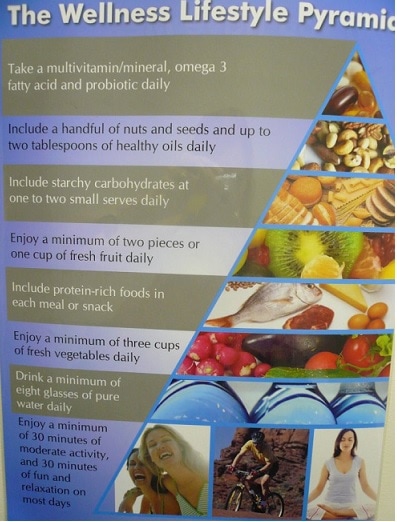 Female infertility is increasing at an astounding rate in Australia. Now a series of new studies suggest the cause for both is the humble fructose molecule found in every teaspoon of sugar added to your food.
Female infertility is increasing at an astounding rate in Australia. Now a series of new studies suggest the cause for both is the humble fructose molecule found in every teaspoon of sugar added to your food.
PolyCystic Ovary Syndrome (PCOS) is the primary cause of female infertility in Australia today. As many as one in five Australian women of reproductive age now have PCOS, however exact data on the numbers affected are hard to come by because up to 70 % of PCOS cases have not been medically diagnosed. The reason that doctors suspect that the syndrome goes largely undiagnosed is that pretty much the only time it’s tested for is when a woman seeks fertility treatment.
The symptoms of PCOS usually include acne, the appearance of male patterns of hair growth (and male baldness) and irregular or absent periods. But above all, its major impact is on fertility.
And this is why:
A recent Swedish study concluded that women with PCOS were 9 times as likely to need access to IVF as women without the syndrome. Now, IVF is not a path women choose lightly. It’s an experience that comes bundled with significant psychological and emotional costs. And at a monetary cost of approximately $32,000 per birth it’s an increasingly expensive burden on mothers, families and the public health system as well. The number of IVF treatments grew by 50% between 2004 and 2009 and is currently increasing by about 14% every year.
As you might expect from a glance at the symptoms, PCOS is a result of there being too much testosterone (the male sex hormone) in circulation. Testosterone is not an exclusively male hormone. Women have it too, but generally circulating at about 10 percent of the male level.
Doctors have long known that women with PCOS not only have higher circulating testosterone, but they also have extremely low levels of very important protein, the charmingly named Sex Hormone-Binding Globulin (SHBG).
One of SHBG’s jobs is to keep testosterone out of circulation. By binding to testosterone, SHBG controls the amount of free (and therefore active) testosterone in our bloodstream. Having low levels of SHBG seems to result in there being too much free testosterone in women.
It’s also well established that people who are obese or who have insulin resistance or Type II Diabetes have extremely low levels of SHBG. In fact low SHBG is such a reliable indicator of insulin resistance that SHBG testing is being proposed as a good early indicator of the development of Type II Diabetes.
Hormones are complex things (and that’s an understatement) and sex hormones are at the top of the ladder in terms of complexity. Because they are constantly produced and their actions depend on the presence or absence of other sex hormones and what sex you are, it’s very hard to tease out the cause and the effect.
For a long time researchers have believed that insulin resistance is the cause of the low levels of SHBG. That would mean that PCOS is a consequence of being insulin resistant but a January 2012 study has shown that is not the case. It turns out that insulin levels do not affect the level of SHBG, but the presence of fat around the liver affects both the insulin level and the SHBG level.
One really sure way to create a fatty liver is to consume large amounts of fructose. Because fructose is (directly and immediately) converted to fat (by our liver) it’s the single most efficient way to get the job done.
The best way to prove that theory is of course to try feeding a healthy person high quantities of fructose and see if they develop fatty liver, insulin resistance and PCOS. Because volunteers for that kind of fun might be hard to come by, researchers have had to resort to rats as the model.
In 2007 a group of Canadian researchers fed rats glucose and fructose to see what happened. They found both sugars suppressed SHBG production but fructose was twice as effective (glucose 40%, fructose 80% suppression) and fructose was especially quick, causing its damage after just three days. They found the SHBG effect was caused by the accumulation of the fats created as a result of processing the fructose.
As a result of these studies, we can confidently say that fructose directly increases the amount of circulating testosterone in women. More testosterone directly impairs a woman’s ability to conceive. Therefore, the single most effective way for a woman to increase her chances of having a baby is for her to stop eating fructose.
When fructose is removed, hormone levels return to normal, PCOS symptoms may disappear and fertility is restored. It really can be that simple. There is no reason (other than financial) that the first words out of a fertility doctor’s mouth shouldn’t be “Stop eating sugar.”









